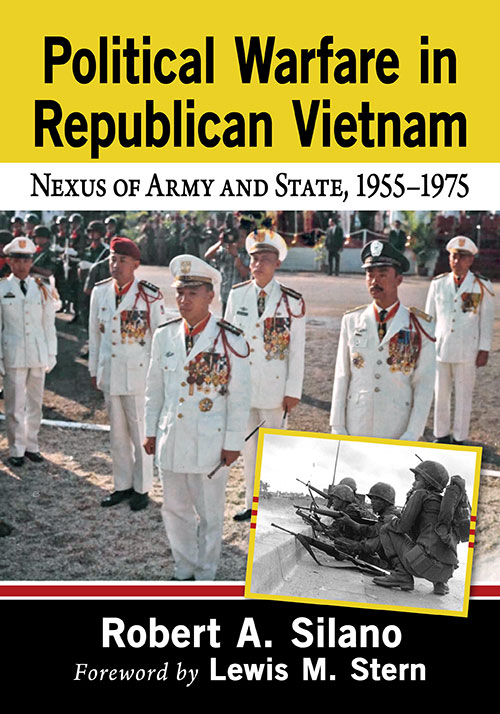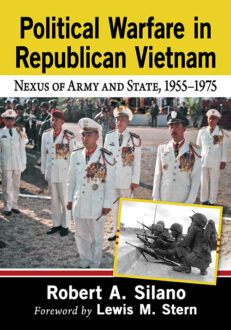Political Warfare in Republican Vietnam
Nexus of Army and State, 1955–1975
$65.00
In stock
About the Book
This work examines the development of the Republic of Vietnam Armed Forces as a national institution; explores the historical origins of the political warfare system; and assesses that system’s nurturing of military morale, popular support, and ways to weaken enemy resolve. North Vietnam in the 1940s and South Vietnam in the 1960s embraced the system of political control over the military that was developed in Soviet Russia after the Bolshevik Revolution and in Republican China in the 1920s where it influenced both the Nationalist and Communist movements. The book discusses the overall effectiveness of political warfare activities in the Republic of Vietnam’s army, the advice and support offered by the U.S. military to the South Vietnamese political warfare establishment, and the consequences of the war’s end for the members of the Republic of Vietnam Armed Forces who served in the political warfare system.
About the Author(s)
Bibliographic Details
Robert A. Silano
Format: softcover (7 x 10)
Pages: 360
Bibliographic Info: 1 map, appendices, notes, bibliography, index
Copyright Date: 2024
pISBN: 978-1-4766-6811-6
eISBN: 978-1-4766-5191-0
Imprint: McFarland
Table of Contents
Table of Contents
Acknowledgments ix
Foreword by Lewis M. Stern 1
Preface 4
Introduction: Propaganda and Political Warfare 7
Leaflets and Loudspeakers 9 | The Commissar 12 | Two Chinas 13 | Two Vietnams 16 | Army of the Republic 20
1. Toward a National Army 23
Military Culture 25 | Troupes Indigènes 29 | On the Western Front 33 | The Interwar Years 41
2. War Over French Indochina 47
Oriental Vichy 48 | Greater East Asia 53 | Victory Without Peace 60 | Yellowing the Force 66
3. Independence Under Fire 70
Contra Mundum 71 | The Brothers Ngô 79 | Personalism as Ideology 82 | Party in the Army 85
4. A Directorate of Generals 88
The Rolling Coup 89 | Men on Horseback 94 | Regular and Territorial Forces 102 | Soldiering 108
5. The Polwar Establishment 111
A Chinese Model 114 | Organizational Structure 116 | Advisory Relations 121 | The Cultural Divide 127
6. Conducting Political Warfare 134
Policy Guidance 135 | The Polwar Staff 135 | Battalions and Companies 136 | Branch Training 138
7. Troop Action—Body, Mind, and Spirit 146
Psychological Warfare 152 | Indoctrination 154 | Military Security 159 | Welfare 161 | Chaplaincies 163
8. Civic and Enemy Action—Suasion 169
Words and Deeds 171 | Target Audiences 173 | Media Selection 175 | Joint and Combined Efforts 183
9. Agitation and Integration Propagandas 190
The Intangibles 192 | Morale and Welfare 197 | Popular Support 199 | Enemy Susceptibilities 200
Epilogue: Without Army or State 204
Final Things 205 | Army of the Republic 206 | Vengeance Is Mine 209 | The Diaspora 211 | A Cynical Peace 214 | Rites of Passage 216
Appendix 1: RVNAF Leadership and Command 221
Appendix 2: RVNAF General and Flag Officers 229
Appendix 3: Vietnamese Piaster Conversion Table 254
Abbreviations and Acronyms 255
Chapter Notes 259
Bibliography 309
Index 343





